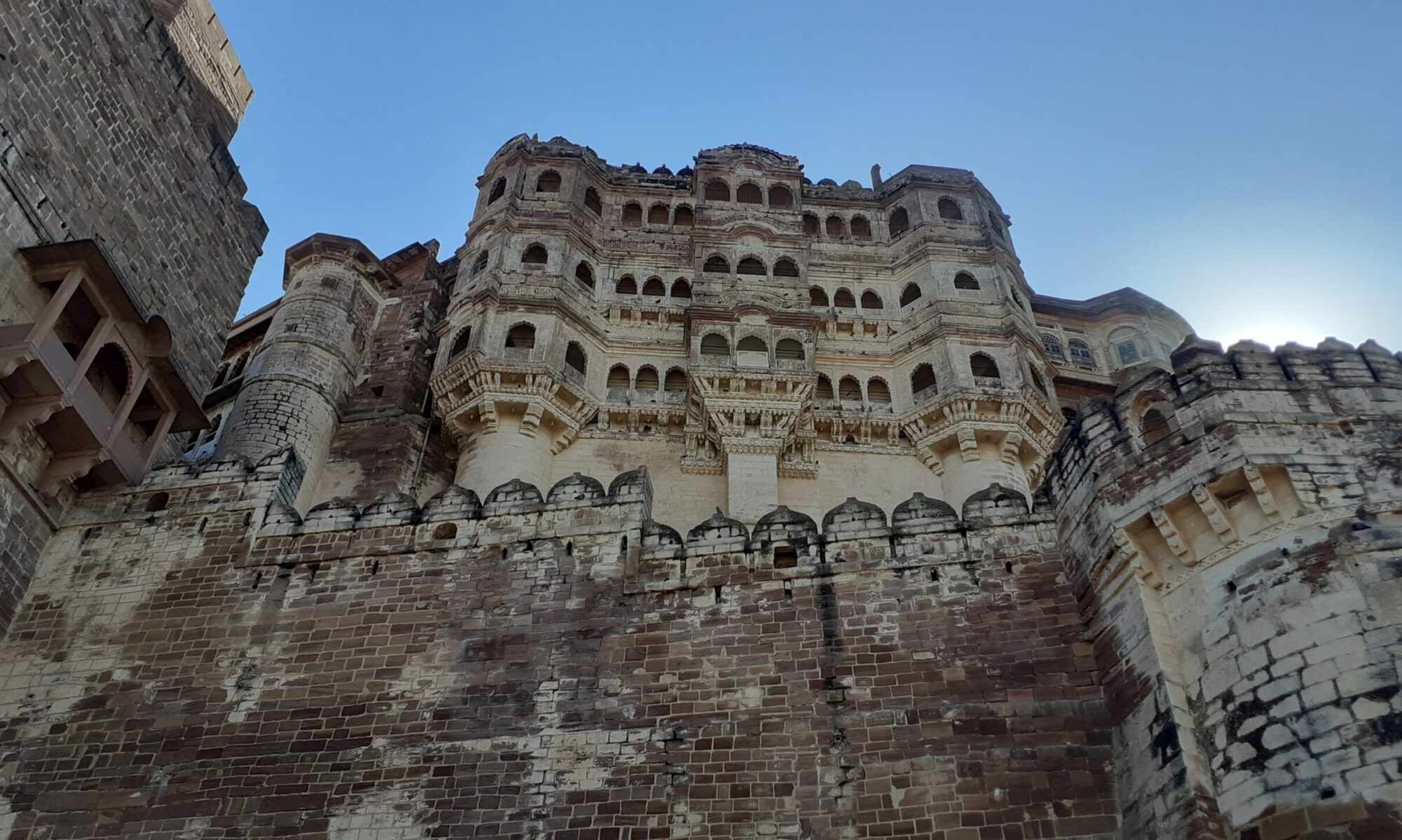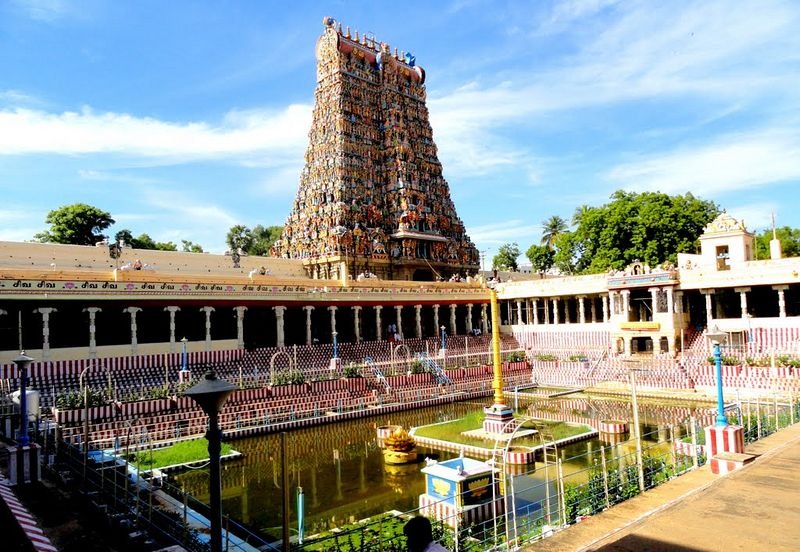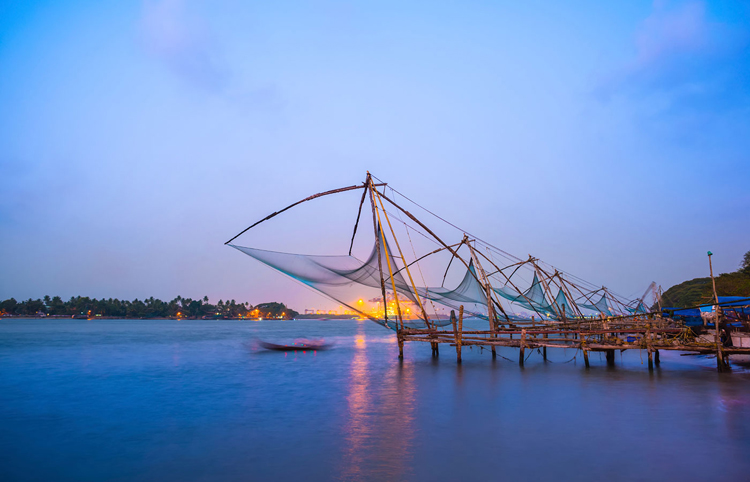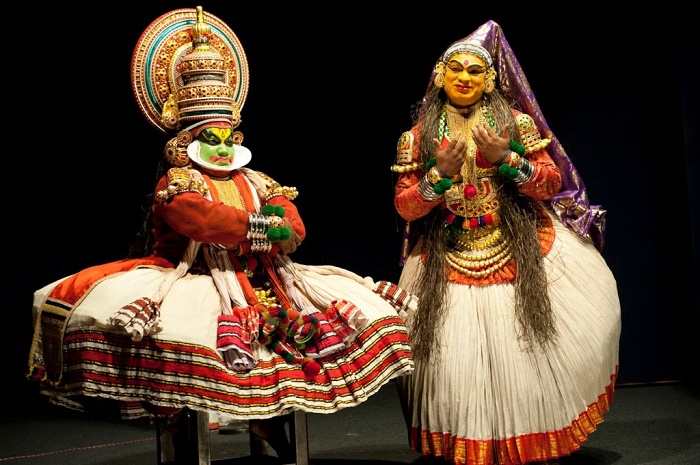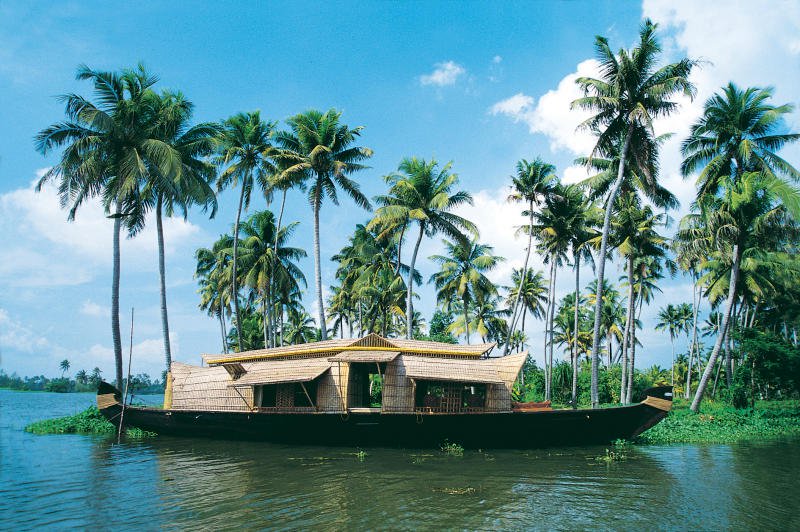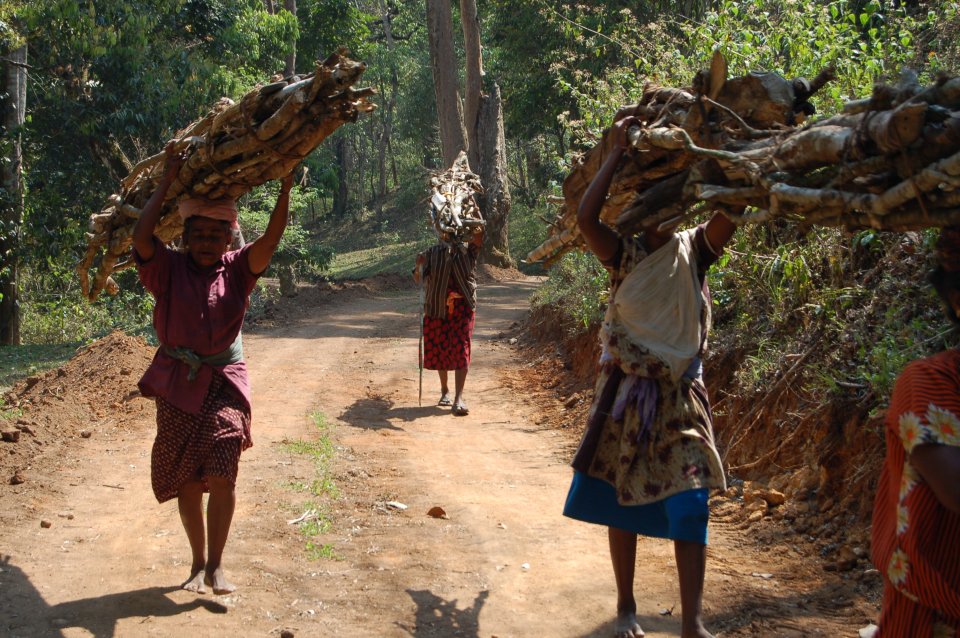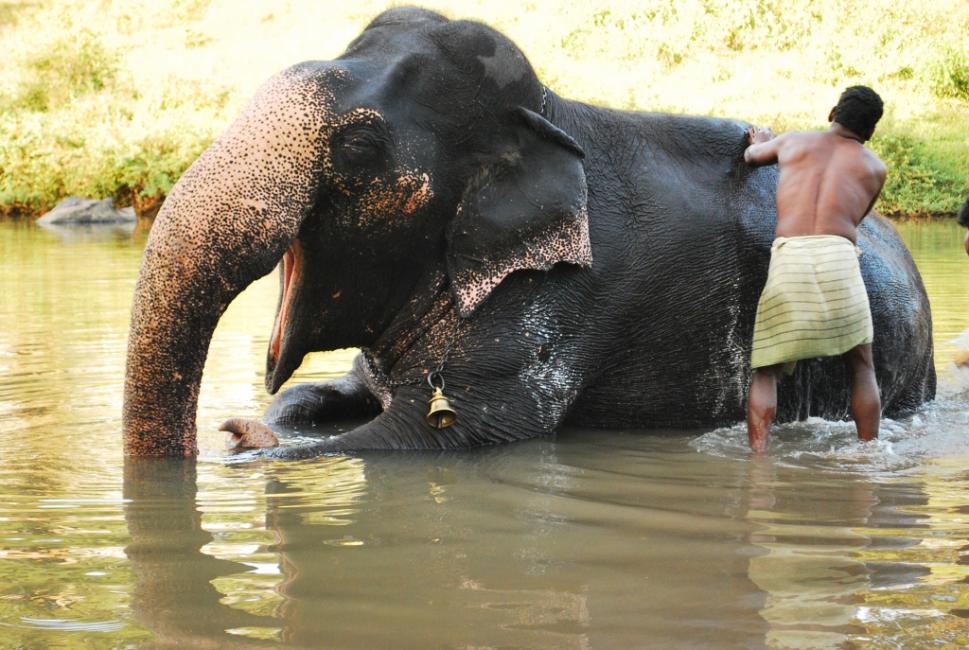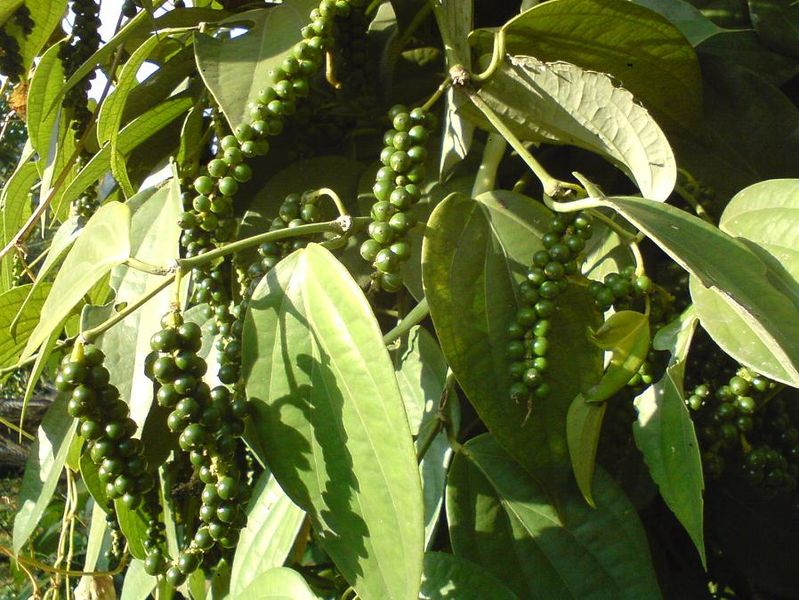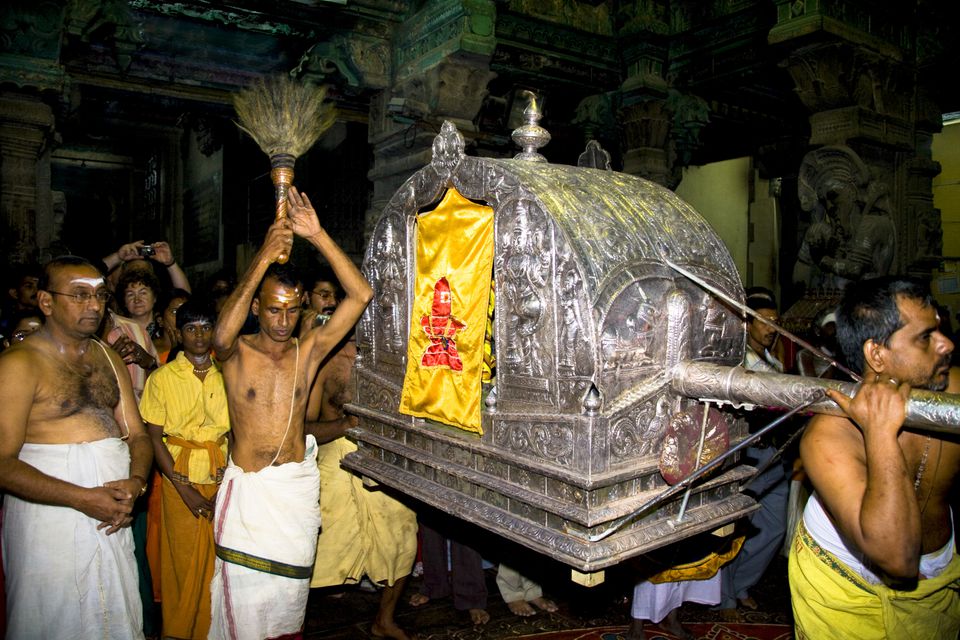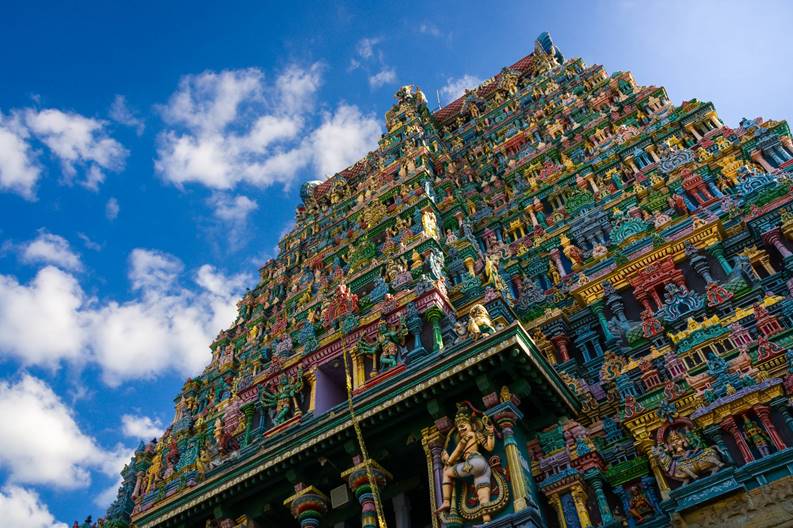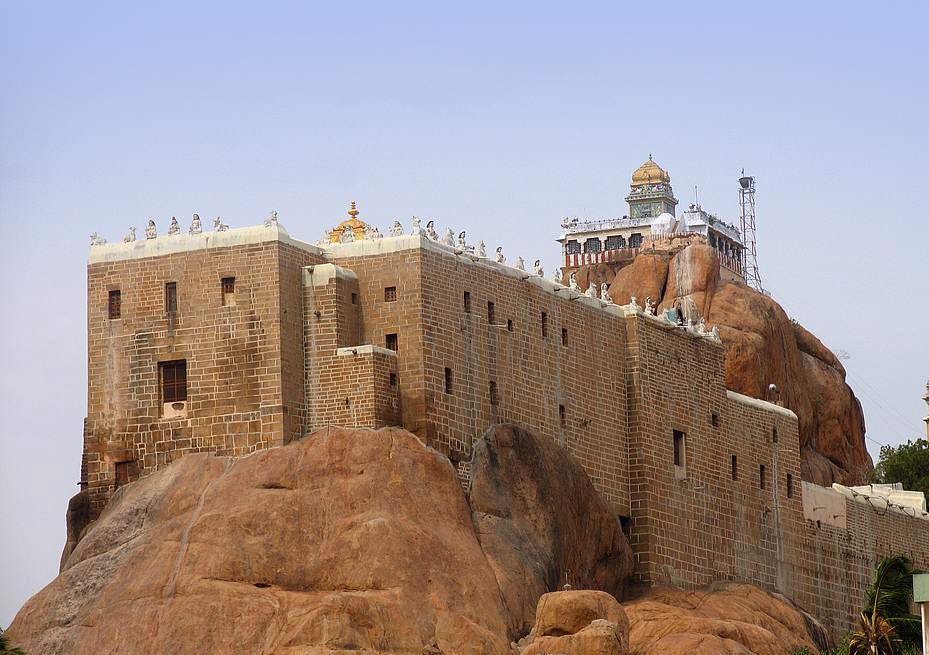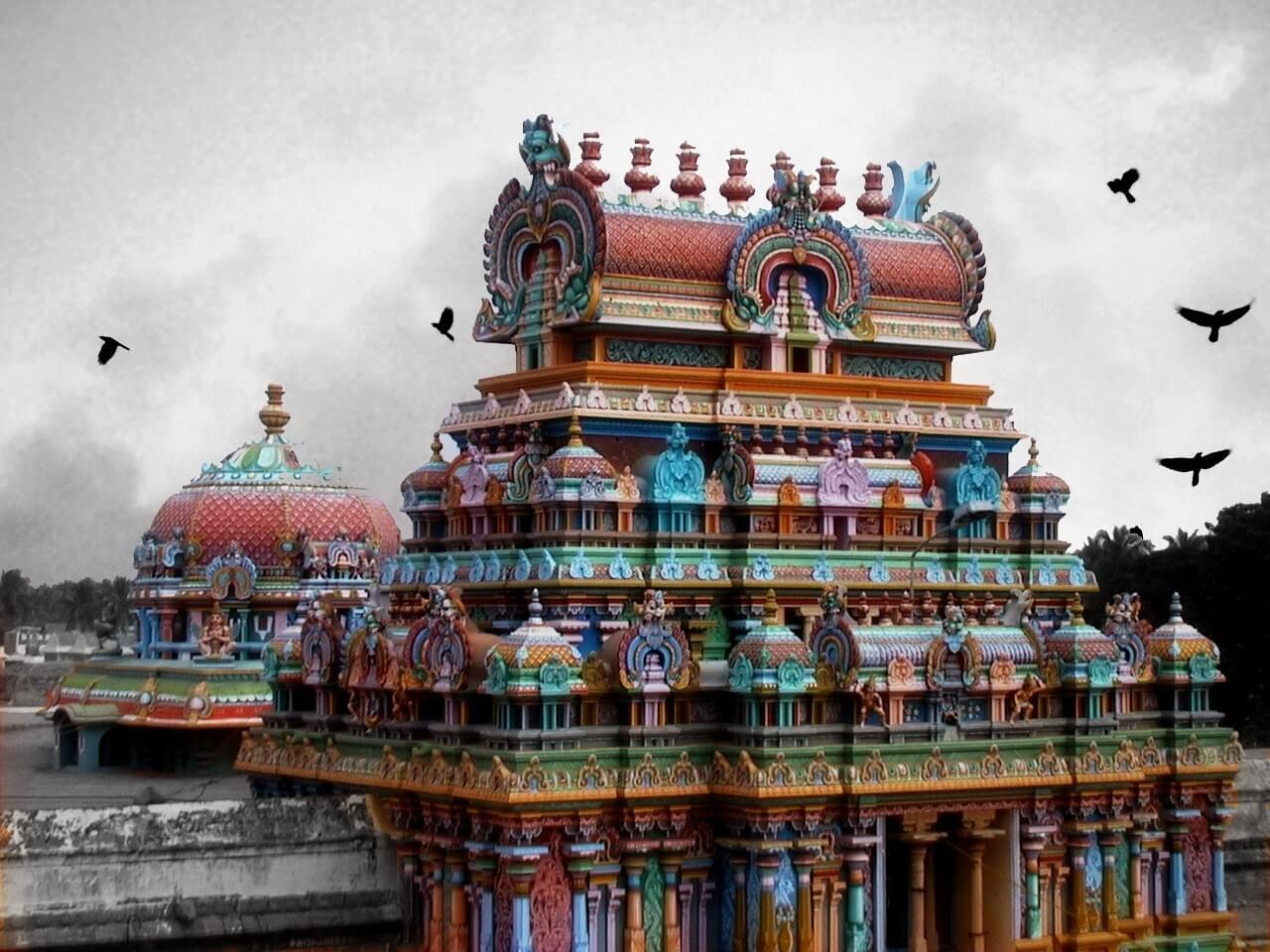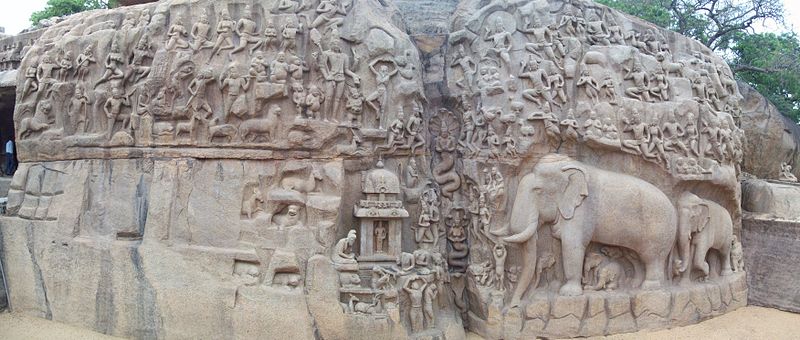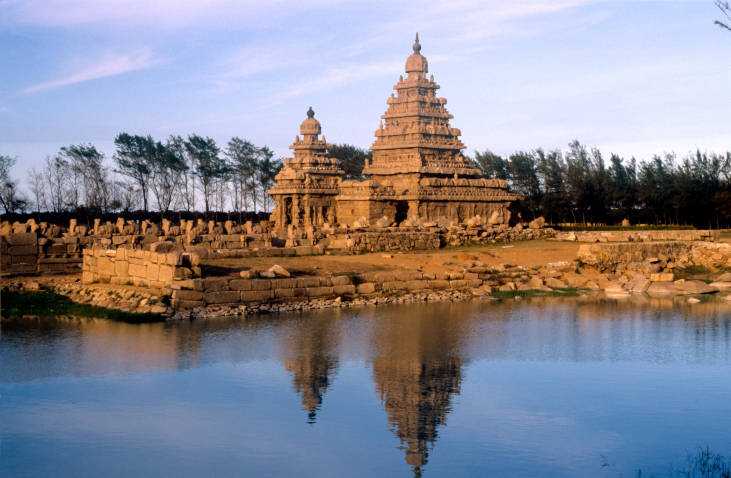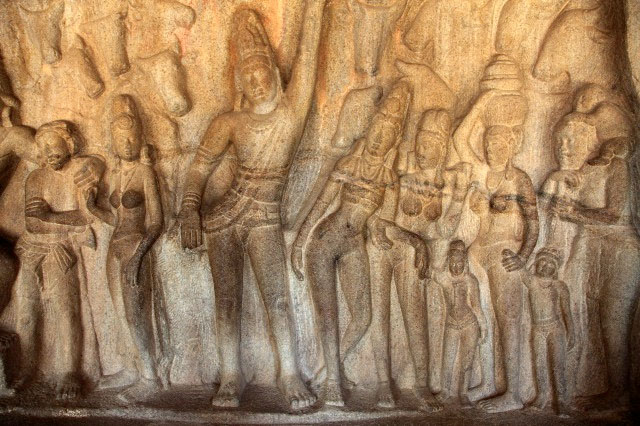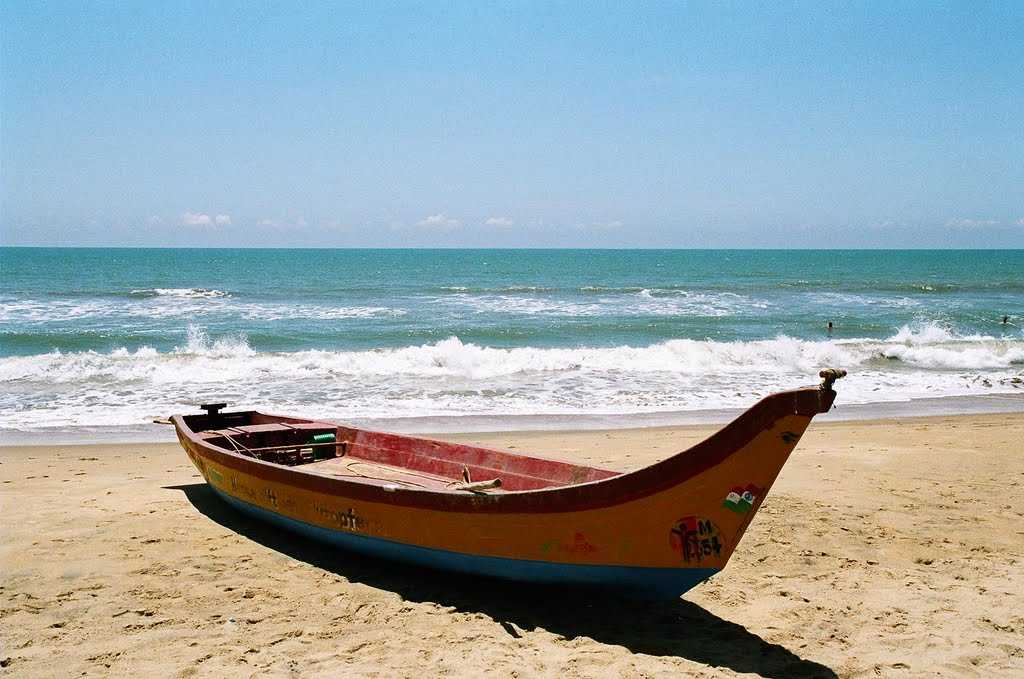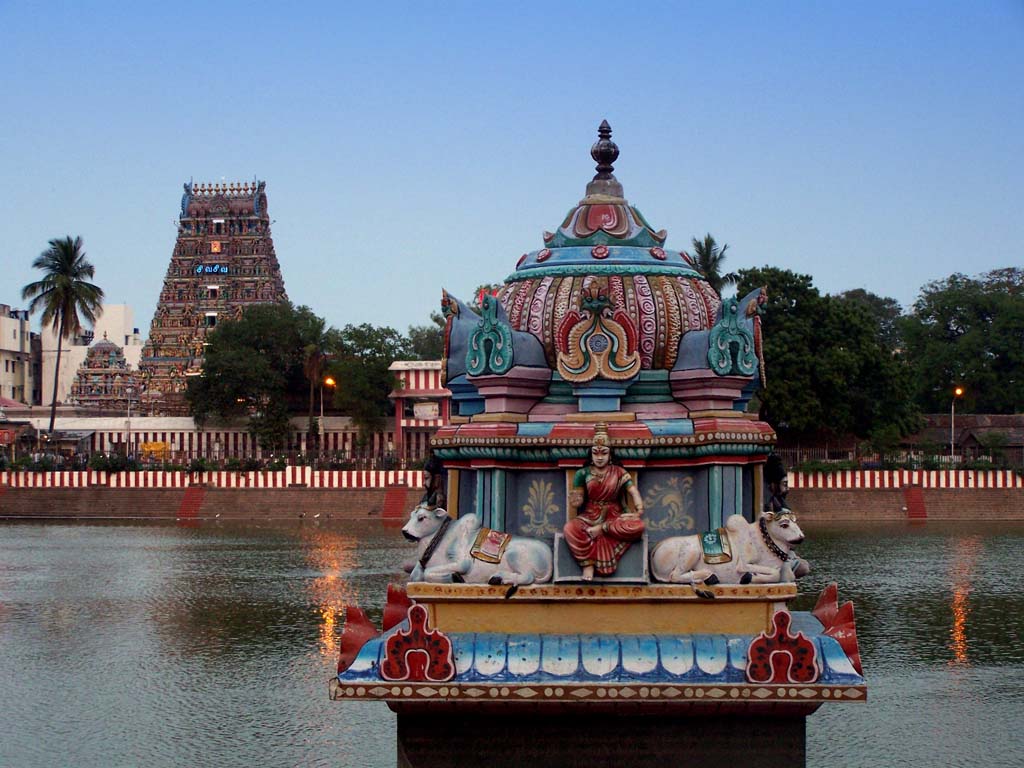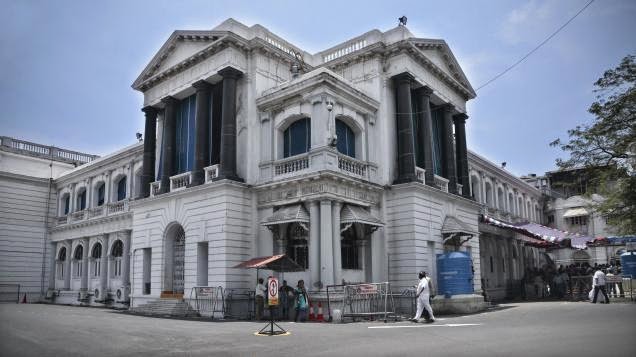Duration: 11 days / 10 Nights
Places: Cochin > Madurai > Tanjore > Trichy > Mahabalipuram > Chennai
Cochin: Known as the “Queen of the Arabian Sea,” Cochin is a historic port city in Kerala renowned for its charming backwaters, colonial architecture, and vibrant spice markets. Visitors can explore the iconic Chinese fishing nets, wander through the quaint streets of Fort Kochi, and witness captivating Kathakali performances.
Madurai: Home to the famous Meenakshi Amman Temple, Madurai is a bustling city in Tamil Nadu steeped in history and culture. The temple’s towering gopurams, intricate carvings, and bustling markets make it a must-visit destination. Madurai also boasts other attractions like the Thirumalai Nayakkar Palace and Gandhi Memorial Museum.
Tanjore (Thanjavur): Tanjore is renowned for its rich cultural heritage, especially its majestic Brihadeeswarar Temple, a UNESCO World Heritage Site. This temple is a marvel of Dravidian architecture, adorned with intricate sculptures and paintings. Tanjore is also famous for its classical music, dance, and vibrant art scene.
Trichy (Tiruchirappalli): Trichy is a bustling city known for its iconic Rock Fort Temple, perched atop a massive rock formation. The temple offers panoramic views of the city and houses ancient shrines dedicated to Lord Shiva. Trichy also boasts other attractions like the Sri Ranganathaswamy Temple and the historic Srirangam Island.
Mahabalipuram: Mahabalipuram, also known as Mamallapuram, is a coastal town renowned for its UNESCO-listed Group of Monuments. These ancient rock-cut temples, mandapas, and sculptures dating back to the 7th and 8th centuries showcase exquisite craftsmanship and intricate detailing. Visitors can also relax on the scenic beaches and explore the town’s vibrant handicraft markets.
Chennai: As the capital city of Tamil Nadu, Chennai is a bustling metropolis known for its vibrant culture, rich history, and modern amenities. Highlights include the iconic Marina Beach, historic Fort St. George, Kapaleeshwarar Temple, and the vibrant Mylapore neighborhood. Chennai also offers a thriving culinary scene, eclectic shopping districts, and cultural festivals throughout the year.
Detailed Itinerary
DAY 01: ARRIVE COCHIN
Arrive Cochin. Cochin has been variously hailed as Queen of the Arabian Sea, Venice of Orient, etc. Some choose to call it simply a museum city for its rich past and colorful present.
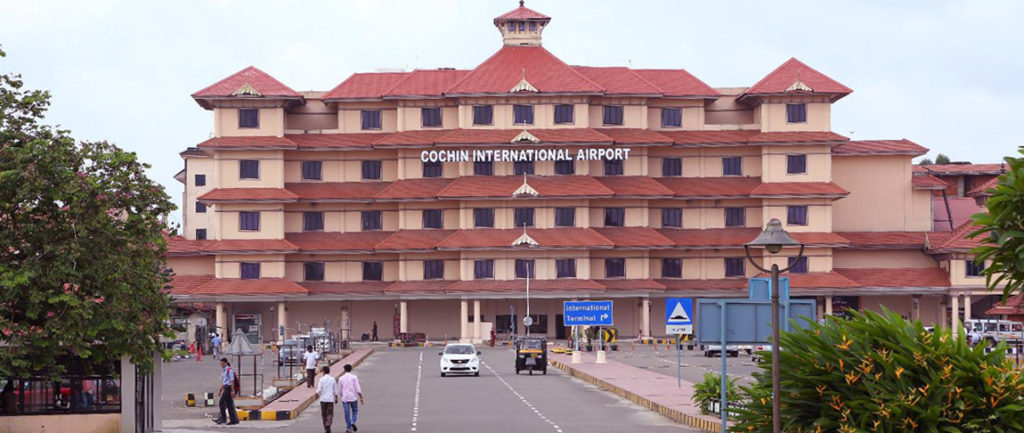
On arrival, transfer to the hotel (Rooms will be available from 1200 hrs)
Overnight at the hotel
DAY 02: COCHIN
Today enjoy the city tour, which includes the visit to the following:
St. Francis Church:
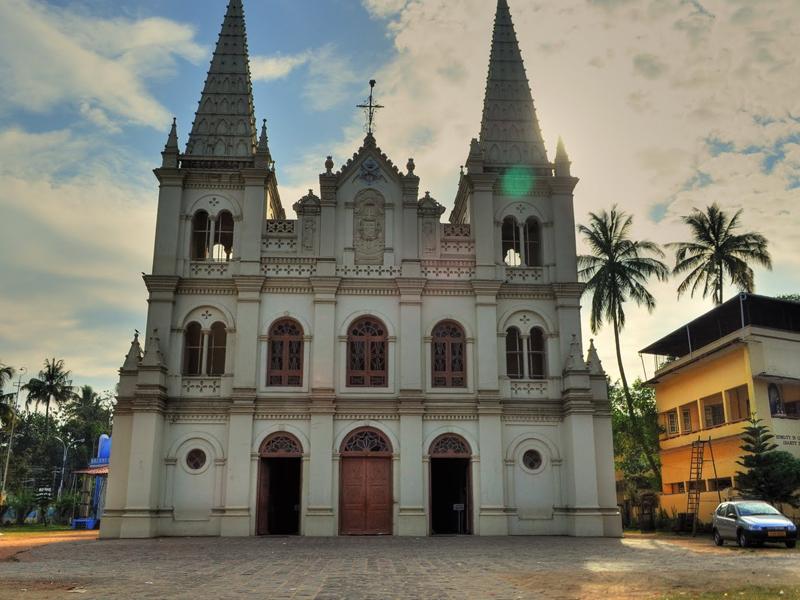
It is the oldest church built by Europeans in India. On his 3rd visit to Kerala, Vasco da Gama, the Portuguese trader who reached India from Europe by sea, fell ill and died in Kochi. He was buried in the St. Francis Church. Later his remains were taken back to Portugal. In spite of that, his burial spot inside the church has been clearly marked out.
Jewish Synagogue:
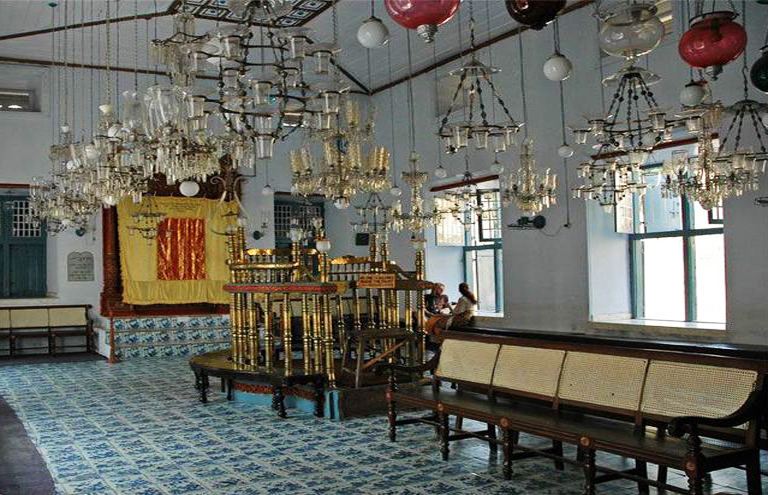
The synagogue, built in 1568, is magnificently decorated by Chinese tiles and Belgian chandeliers. Giant scrolls of the Old Testament can be found here. It is located near the Dutch Palace in Mattancherry.
Note: It remains closed on Fridays and Saturdays. Timings for the visit: 0900 hrs to 1200 hrs and from 1500 hrs to 1700 hrs.
Dutch Palace:
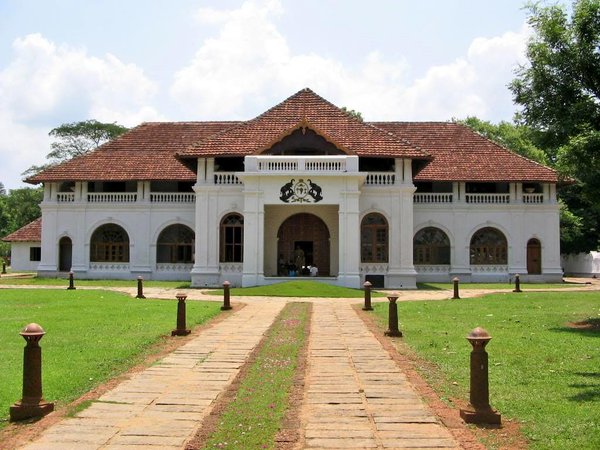
The Dutch Palace was originally built by the Portuguese. Later, in 17th century, the Dutch modified it and presented it to the Raja of Kochi.
Coronation of many Rajas of Kochi were held here. The palace has a fine collection of mural paintings depicting scenes from the Hindu epics Mahabharatha and Ramayana. The palace is located in Mattancherry.
Note: It remains closed on Fridays. Timings for the visit: 1000 hrs to 1700 hrs.
Chinese Fishing Nets:
The Chinese fishing nets (Cheenavala) are distinctly unique to Cochin. It is believed that traders from the court of the Chinese ruler Kublai Khan introduced these nets here. Oddly, these nets are found only in Kochi, outside China! Many fishermen earn their livelihood by fishing using these massive nets. A whole stretch of the coast along Fort Kochi and Vypeen are dotted with these nets.
In the evening enthrall yourself with a special presentation of the colorfully costumed Kathakali Dance Drama in a local theater. Kathakali is a traditional dance form of Kerala and the impressive facial expressions, hand gestures and dance moves will leave one spellbound.
Overnight at the hotel
DAY 03: COCHIN – BACKWATERS (65 Kms /01 hr 30 min)
After breakfast,drive to the jetty to board House-boat (Kettuvallom) on the World famous Backwaters of Kerala.
“Kettu” literally means to tie up and “Vallom” means ” boats”. The boats played a major role in the economic development of ancient Kerala, moving cargo and men from the very nook and corner of otherwise unreachable area, cutting across the length and breadth of the land.
Overnight on Houseboat
DAY 04: BACKWATERS – PERIYAR
After breakfast on the rice boat (Kettuvallom) get down at jetty and drive to Periyar. On arrival in Periyar, transfer to hotel.
Later drive to a tribal village. This will be a very nice and interesting 01 hour visit whereby the clients will be able to observe the lifestyle of the Tribals from close quarters.
After the visit, drive to an Elephant Camp where we will organize elephant bathing and elephant feeding. We will also organize a 30 min Elephant ride. After visiting Elephant Camp, visit a Spice Plantation.
You will walk through the aromatic spice gardens where the air is laden with the fragrance of nature’s bounty. Spices can be defined as “aromatic substances of vegetable origin, used for Flavoring food or as a preservative.” Many spices are also known to have medicinal value, for instance turmeric is a known anti-oxidant and curry leaf can control and prevent diabetes.
The spice plantations of Kerala are fascinating farms to wander in, for different sections of each plantation are dedicated to different spices. Apart from spices traditionally grown in India such as pepper, cinnamon, ginger and cardamom farmers in Kerala have taken to growing spices that are used worldwide. Some of the spices cultivated in spice plantations are vanilla, oregano, rosemary, thyme, basil, mint, bay leaf and sage.
Overnight at the Hotel
DAY 05: PERIYAR – MADURAI (160 Kms /4 hr 30 min)
After breakfast, drive to Madurai. On arrival in Madurai, transfer to hotel and check in
In the evening, visit the Meenakshi Temple to attend the evening ceremony known as ‘Bedtime of the God’. A colorful procession, in which the image of Shiva is carried accompanied by musicians, temple singers and priests from his shrine. Enroute Shiva visits the other deities before entering Parvati’s (Meenakshi) temple to sleep with her for the night. This ceremony is worth witnessing.
Overnight at the hotel
DAY 06: MADURAI
After breakfast, enjoy the city tour of Madurai, which includes the visit to the following:
Meenakshi Temple:
This temple is nearly 2000 years old placed in the heart of the old town – a splendid example of Dravidian architecture. The present temple was designed in 1560 by Vishwanatha Nayak and subsequently built during the reign of Tirumalai Nayak.
There are four entrances to the temple with an area of six hectares. Each of its 12 towers has the height of 45 to 50 meters. The Potrama Raikulam or the Golden Lotus Tank is the place where the Tamil literacy society, called Sangam used to meet to decide the merits of the work presented to them. The temple museum has 985 richly carved pillars and each one surpasses the other in beauty.
Note: Meenakshi Temple remains closed from 1200 hrs till 1530 hrs.
Tirumalai Nayak Mahal:
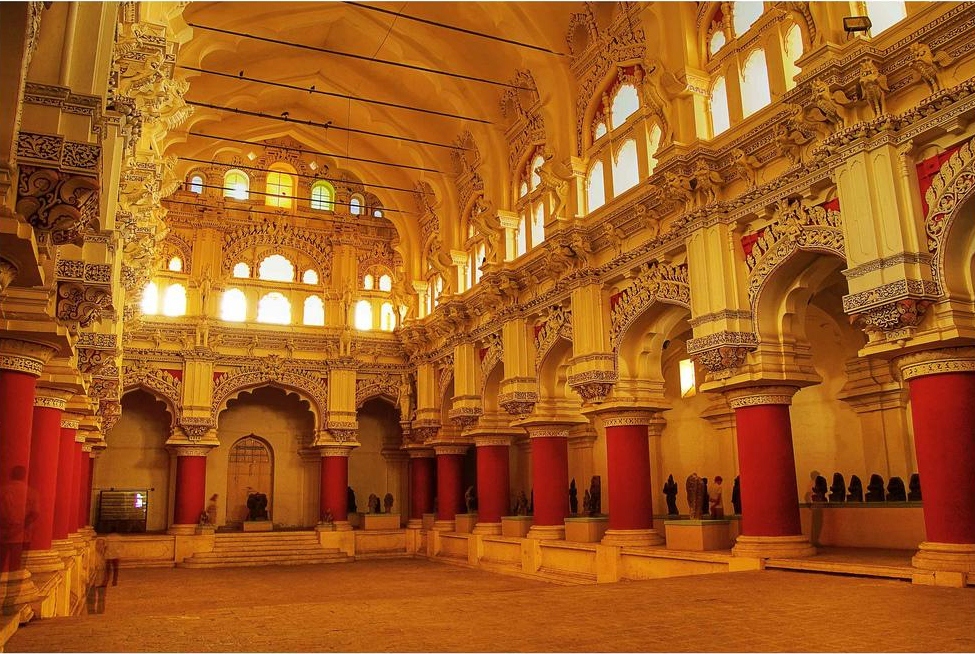
This Indo-Saracenic building was constructed in 1523 and was originally four times large are today. Sound and light show on the life of the Tirumalai Nayak and the story of the Silapathikaram are conduced daily.
Overnight at the hotel
DAY 07: MADURAI – TANJORE -TRICHY ( 130 Kms / 04 hr)
After breakfast, drive to Trichy. Enroute visit Tanjore.
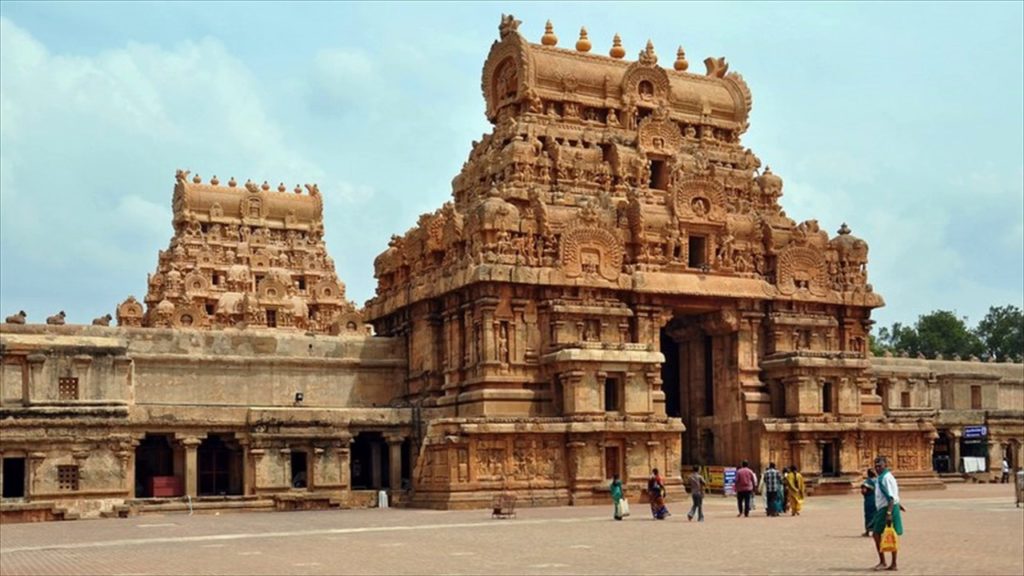
Brihadeshwara Temple & Fort:
Built by great Chola king in the 10th century it is an outstanding example of Chola architecture and is listed in world heritage. On the top of the apex of 63 metres high, a dome is said to be constructed from a single piece of granite, weighing an estimated 81 tones. The dome was hauled into place along a 6 km earthwork ramp in a manner similar to the one used by the Egyptian Pyramids. The temple has been the sense of continuous worship for over thousand years. Only Hindus are allowed inside.
Note: Brihadeshwara Temple remains closed from 1200 to 1600 hrs.
Later continue your drive to Trichy. On arrival in Trichy, transfer to hotel.
Overnight at the hotel
DAY 08: TRICHY – MAHABALIPURAM ( 265 Kms / 06 hrs)
After breakfast,visit of the following-
The temple tops an 83m high outcrop. This smooth rock was first hewn by the Pallavas who cut small cave temples into the southern face, but it was the Nayakas who made use of its naturally climb up the 437 steps cut into the stone to the top but well worth it for the views. Non-Hindus are not allowed into the Vinayaka Temple at the summit nor did the bigger Sri Thayumanaswamy Temple dedicate to Siva, halfway up. Occasionally temple priest waive this regulation.
Sri Ranganathaswamy Temple:
This superb temple complex at Srirangam, about three km from the Rock Fort, is surrounded by seven concentric walls with 21 gopurams and is probably the largest in India. Most of it dates from the 14th to 17th centuries, and many people have had a hand in its construction, including the Cheras, Pandyas, Cholas, Hoysalas and Vijayanagars. The largest gopuram in the first wall on the southern side was completed as recently as 1987 and now measures an astounding 73m. The temple complex is very well preserved, with excellent carvings throughout and numerous shrines to various gods, though the main temple is dedicated to Vishnu. Even the Muslims are said to have prayed here after the fall of Vijayanagar Empire.
Note: Temples remains closed from 1200 hrs till 1500 hrs.
After the sightseeing, drive to Mahabalipuram. On arrival, transfer to hotel
Overnight at the hotel
DAY 09: MAHABALIPURAM
After breakfast, enjoy the sightseeing of Mahabalipuram, which includes the following-
Arjuna’s Penance :
Carved in relief on the face of a huge rock, Arjuna’s Penance is the mythical story of the River Ganges issuing from its source high in the Himalaya . the panel depicts animal animals, deities and other semi-divine creatures, fable from the Panchatantra, and Arjuna doing a penance to obtain a boon from Siva.
Shore Temple:
This beautiful and romantic temple, ravaged by wind and sea, represents the final phase of Pallavas art and was built in the late 7th century during the reign of Rajasimha. It is believed that at one point in time there were seven such temples, six of them were victims to the natural elements of erosion. This temple has three shrines; one dedicated to Lord Vishnu and the other two to Lord Shiva. The frothy waves form a striking backdrop to the temple, protected by rows of rock-carved bulls. The most unique feature of the temple is that it houses shrines to both Lord Shiva and Lord Vishnu.
Mandapams:
There are eight mandapams (shallow, rock-cut halls) scattered over the main hill, two of which have been left unfinished. They are mainly of interest for their internal figure sculptures. One of the earliest rock-cut temples is the Krishna Mandapam. It features carvings of a pastoral scene showing Krishna lifting up the Govardhana Mountain to protect his kinsfolk from the wrath of
Indra. On the hill rests a dangerously balanced boulder named Krishna’s Butterball after his legendary affinity for fresh butter.
Five Rathas

These are the architectural prototypes of all Dravidian temples, demonstrating the imposing gopurams and Vimanas; multi pillared halls and sculptured walls, which dominate the landscape of Tamil Nadu.
Rest of the day is free to relax on beach.
Overnight at the hotel
DAY 10: MAHABALIPURAM – CHENNAI (55 Kms /01 hr)
After breakfast, drive to Chennai. On arrival in Chennai, transfer to the hotel.
Later enjoy the visit to the following:
The Santhome Cathedral Church:
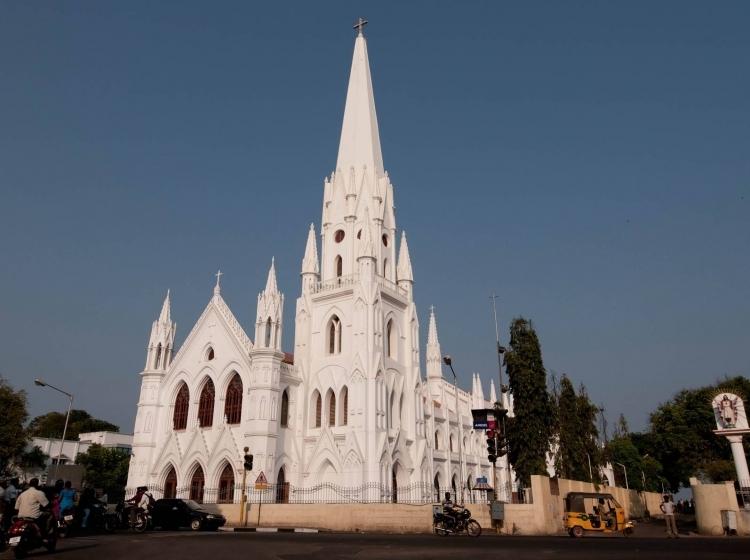
The Santhome Cathedral Church built in 1504, then rebuilt in neo-Gothic style in 1893, this Roman Catholic Church near Kapaleeshwarar temple is said to house the remains of St. Thomas the Apostle.
The stretch of beach known as the Marina extends for 13km. South of the pitiful aquarium is the Ice House, once used to store massive ice blocks transported by ship from North America. It later became the venue from which Vivekananda preached his ascetic philosophy.
Kapaleeswarar, an ancient Shiva temple, is the biggest temple in Chennai. A masterpiece of Dravidian style and displays the architectural elements – gopurams, mandapams and a tank. There are some fragmentary inscriptions dating back to 1250 AD.
St. George fort was built by the British East India Company. the fort was built in 1640 AD, under the direct supervision of Francis Day and Andrew Cogon. Today it is used as an office of Tamil Nadu Secretariat and the Legislative Assembly. The fort houses a St. Mary’s Church and fort museum.St. Mary’s Church the oldest Anglican Church in India built in 1680 and the tombstones in its courtyard are the oldest British tombstones in India. This ancient prayer house solemnized the marriages of Robert Clive and Governor Elinu-Yale, who later founded the Yale University in the States.
Overnight at the hotel
DAY 11: CHENNAI DEPARTURE
Today you will be transferred to the airport to connect the flight for onward journey.
End of Tour
Tour FAQs
Q: What is Cochin known for?
A: Cochin, often hailed as the “Queen of the Arabian Sea” and “Venice of the Orient,” is celebrated for its rich history, vibrant culture, and picturesque surroundings.
Q: What are the highlights of the city tour in Cochin?
A: The city tour of Cochin includes visits to St. Francis Church, Jewish Synagogue, Dutch Palace, and the iconic Chinese Fishing Nets, along with an enchanting Kathakali Dance Drama performance in the evening.
Q: What is the significance of the Meenakshi Temple in Madurai?
A: The Meenakshi Temple, nearly 2000 years old, is a splendid example of Dravidian architecture and is dedicated to Goddess Meenakshi. It features intricate carvings, towering gopurams, and a vibrant temple museum.
Q: What is the highlight of the evening ceremony at the Meenakshi Temple in Madurai?
A: The evening ceremony at the Meenakshi Temple, known as the ‘Bedtime of the God,’ is a colorful procession where the image of Shiva is carried accompanied by musicians, temple singers, and priests from his shrine.
Q: What are the main attractions in Mahabalipuram?
A: The main attractions in Mahabalipuram include Arjuna’s Penance, Shore Temple, Mandapams, and the Five Rathas, which showcase the architectural brilliance of the Pallavas.
Q: What are the key features of the Rock Fort Temple in Trichy?
A: The Rock Fort Temple in Trichy, perched atop an 83-meter-high outcrop, offers panoramic views of the city. It features a temple dedicated to Lord Shiva and is accessed by climbing 437 steps.
Q: What are the prominent sites to visit in Chennai?
A: In Chennai, visitors can explore the Santhome Cathedral Church, Marina Beach, Kapaleeswarar Temple, and Fort St. George & Museum, which showcase the city’s rich history, religious diversity, and colonial heritage.
Q: What is the recommended attire for temple visits?
A: Visitors are advised to wear modest clothing, covering shoulders and knees, and to remove footwear before entering the temple premises as a sign of respect.
Q: Is there free time available for relaxation during the tour?
A: Yes, there are leisure periods available throughout the tour, allowing guests to relax, explore independently, or enjoy optional activities as desired.
Q: How can I book this tour?
A: You can book this tour by contacting us directly. We will assist you with itinerary customization, booking confirmation, and any additional information you may require.
Get a Quote: Call/Whatsapp: +91 9810594172 or Fill Contact Form
